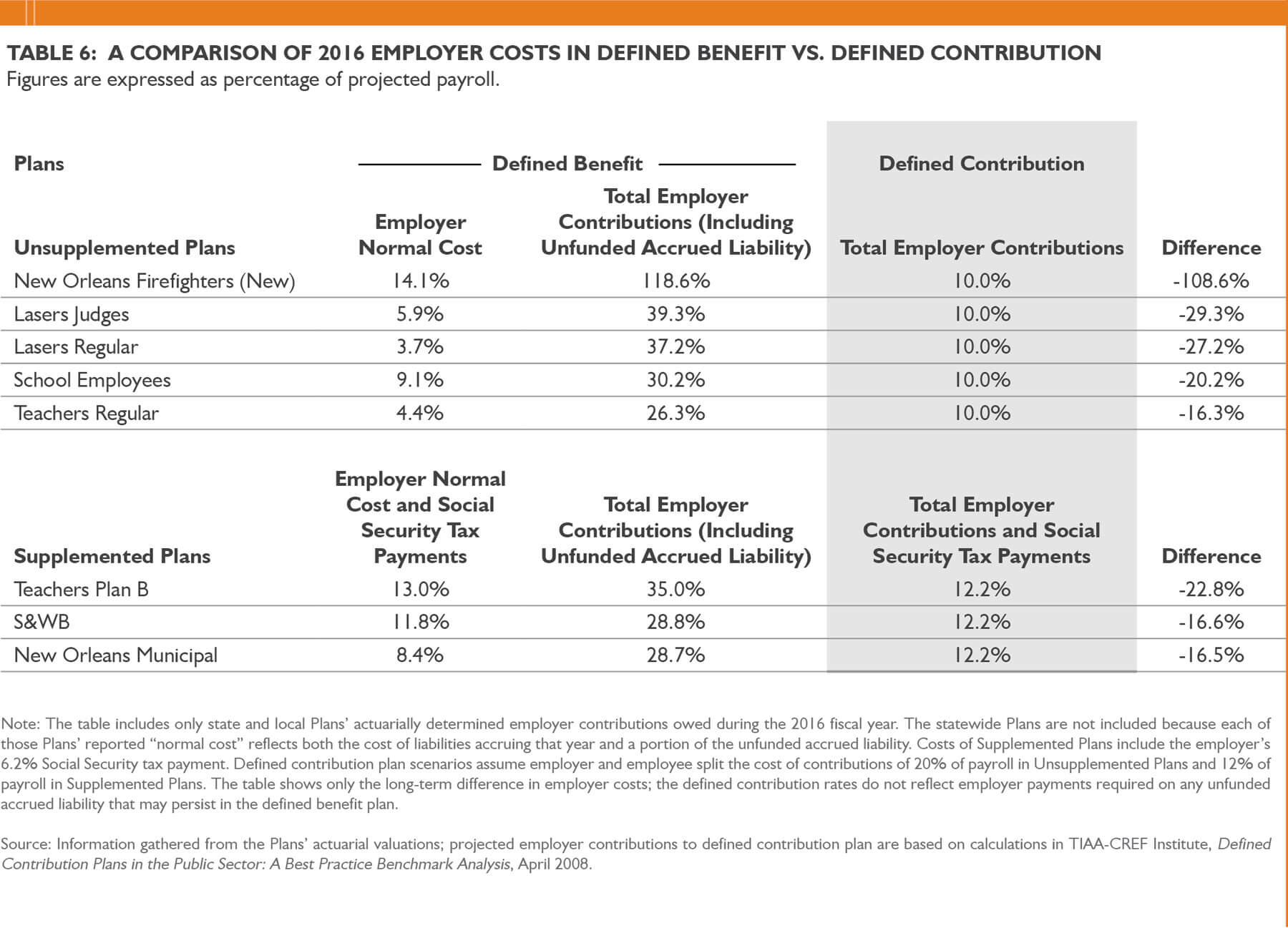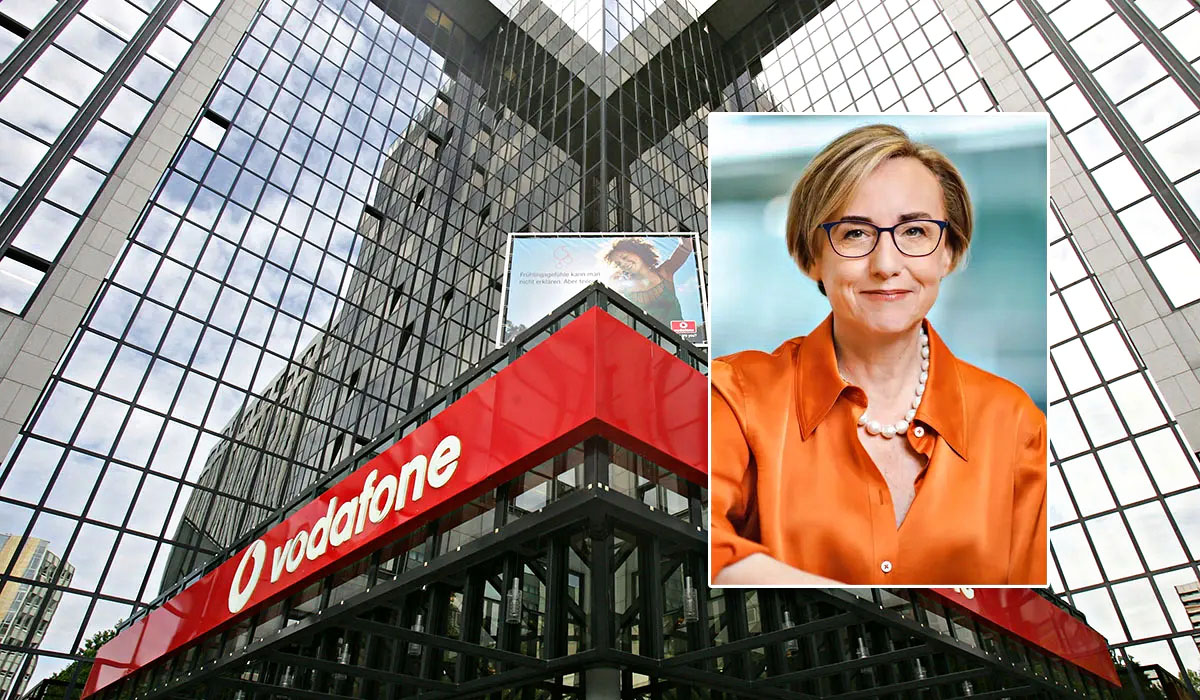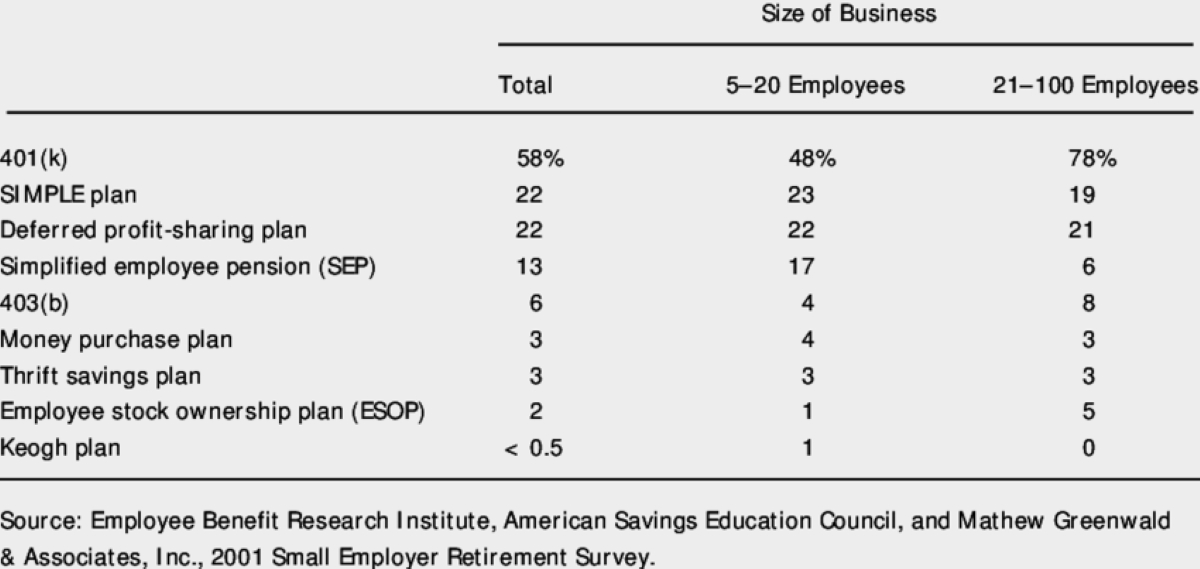Home>Finance>Companies That Had Defined Contribution Plans When The Market Crashed


Finance
Companies That Had Defined Contribution Plans When The Market Crashed
Published: January 2, 2024
Looking for finance companies that had defined contribution plans during the market crash? Explore our comprehensive list of companies and gain valuable insights.
(Many of the links in this article redirect to a specific reviewed product. Your purchase of these products through affiliate links helps to generate commission for LiveWell, at no extra cost. Learn more)
Table of Contents
- Introduction
- What are Defined Contribution Plans?
- The Impact of the Market Crash on Defined Contribution Plans
- Companies with Defined Contribution Plans during the Market Crash
- Case Study 1: Company A’s Defined Contribution Plan during the Market Crash
- Case Study 2: Company B’s Defined Contribution Plan during the Market Crash
- Case Study 3: Company C’s Defined Contribution Plan during the Market Crash
- Lessons Learned from Defined Contribution Plans during the Market Crash
- Conclusion
Introduction
Welcome to our comprehensive guide on companies that had defined contribution plans when the market crashed. In times of economic uncertainty and volatility, understanding how companies navigate their retirement plans is crucial for both employees and employers. Defined contribution plans, such as 401(k) plans, offer employees an opportunity to save for retirement while benefiting from potential employer matching contributions.
However, during a market crash, these plans can be greatly affected, impacting the retirement savings of employees and the financial stability of the companies offering them. This article will explore the impact of market crashes on defined contribution plans and highlight some case studies of companies that had these plans in place when the market crashed.
Examining how companies handled their defined contribution plans during a market crash can provide valuable insights into the challenges they faced, the strategies they employed, and the lessons learned. By understanding these real-life examples, individuals can better prepare for similar situations, and companies can make informed decisions about their retirement plans.
Throughout this article, we will explore the experiences of various companies and analyze the actions they took to mitigate the effects of the market crash on their defined contribution plans. Additionally, we will discuss the key takeaways and lessons learned from these cases, offering valuable insights for both employees and employers.
So, if you’re interested in understanding how companies handle their defined contribution plans during a market crash and the impact it has on employees and businesses, keep reading as we dive deeper into this topic.
What are Defined Contribution Plans?
Defined contribution plans are retirement savings plans that allow employees to contribute a portion of their earnings into individual accounts. These plans are commonly offered by employers as a way to support their employees’ long-term financial goals. Unlike traditional pension plans, where the employer bears the investment risk and guarantees a fixed payout in retirement, defined contribution plans place the investment responsibility on the employees themselves.
One of the most popular types of defined contribution plans is the 401(k) plan, named after the section of the Internal Revenue Code that governs them. In a 401(k) plan, employees allocate a portion of their pre-tax income towards their retirement savings. These contributions are often matched by the employer up to a certain percentage, further incentivizing employees to participate in the plan.
One of the key advantages of defined contribution plans is their portability. Employees can typically take their contributions and any vested employer matching contributions with them when they change jobs. This provides individuals with greater flexibility and control over their retirement savings, allowing them to continue building their nest eggs regardless of employment changes.
Within a defined contribution plan, the employee’s account balance is based on the contributions made, any employer matching contributions, and the investment performance of the chosen investment options. Employees are typically given a range of investment options, such as mutual funds or target-date funds, to choose from based on their risk tolerance and investment preferences.
As employees contribute to their defined contribution plans, the funds accumulate and grow over time, benefiting from compounding returns. The ultimate value of the account at retirement depends on various factors, including the amount contributed, investment returns, and the number of years the contributions have been invested.
It’s important to note that unlike defined benefit plans, where employees are guaranteed a specific payout in retirement, the benefits in defined contribution plans are not predetermined. The final retirement benefit is subject to market performance and individual investment decisions. This key distinction puts more responsibility on employees to make informed investment choices and manage their retirement savings effectively.
Defined contribution plans have become a popular retirement savings vehicle for both employees and employers due to their flexibility, portability, and potential for long-term growth. However, when the market crashes, these plans can face significant challenges, affecting the retirement savings of employees and requiring companies to reassess their strategies.
The Impact of the Market Crash on Defined Contribution Plans
When a market crash occurs, defined contribution plans can experience significant negative impacts. The value of the investments held within these plans can decline rapidly, potentially eroding the retirement savings of employees. Additionally, the employer contributions may also be affected, impacting the overall growth of the retirement accounts.
One of the key factors that contribute to the impact of a market crash on defined contribution plans is the investment allocation chosen by the employees. If individuals have a high allocation to stocks or other volatile assets, their account balances may experience larger declines during a market crash. On the other hand, those who have a more conservative investment strategy with a higher allocation to bonds or cash may experience smaller losses, but potentially miss out on the potential for larger gains when the market recovers.
Another factor that can impact defined contribution plans during a market crash is the continuity of contributions. In times of economic uncertainty, companies may face financial challenges and reduce or suspend their matching contributions. This can have a significant impact on employees’ retirement savings, as the employer match is a crucial component of the overall growth of the accounts.
Additionally, a market crash can create a sense of panic and uncertainty among employees, leading them to make hasty investment decisions. When individuals react emotionally and sell their investments during a downturn, they may miss out on the potential rebound and recovery of the market. This can further impact the overall growth and long-term value of their defined contribution plans.
Furthermore, if the market crash leads to widespread job losses or company closures, employees may face difficulties in continuing their contributions to the plan. With financial instability and uncertainty, individuals may need to tap into their retirement savings to cover immediate expenses, further depleting their long-term savings.
In light of these potential impacts, it is important for both employees and employers to carefully monitor and assess the performance of their defined contribution plans during a market crash. Communication and education play crucial roles in helping employees understand the potential risks and benefits of their investment choices and guiding them towards making informed decisions.
Furthermore, employers should consider implementing strategies to mitigate the impacts of a market crash on their defined contribution plans. This may involve providing financial counseling or access to financial advisors to help employees navigate challenging times and make appropriate investment decisions. Employers may also need to evaluate their matching contribution policies and make adjustments to ensure the long-term viability of their retirement plans.
By being proactive and adaptable during a market crash, companies can help safeguard the retirement savings of their employees and enhance the overall financial well-being of their workforce.
Companies with Defined Contribution Plans during the Market Crash
During a market crash, numerous companies with defined contribution plans faced the challenge of protecting their employees’ retirement savings while navigating the volatile financial landscape. Let’s explore a few notable case studies of companies that had defined contribution plans in place when the market crashed.
- Case Study 1: Company A
- Case Study 2: Company B
- Case Study 3: Company C
Company A, a large multinational corporation, had a well-established 401(k) plan in place for its employees when the market crash occurred. Recognizing the potential impact on their employees’ retirement savings, the company swiftly communicated with plan participants, providing education and guidance on managing investments during times of market volatility. They emphasized the importance of staying focused on long-term goals and avoiding knee-jerk reactions.
In addition, Company A conducted a thorough review of the investment options offered within the plan, ensuring they were diversified and aligned with market conditions. They also increased access to financial advisors for employees seeking personalized guidance. By taking these proactive measures, Company A was able to weather the market crash with minimal disruption to their employees’ retirement savings.
Company B, a mid-sized tech firm, also had a defined contribution plan for its employees when the market crashed. However, unlike Company A, Company B faced significant financial challenges during this period. As a result, they made the difficult decision to suspend their matching contributions temporarily.
To support their employees during this challenging time, Company B provided additional resources in the form of financial education and counseling. They encouraged employees to reassess their investment strategies and consider adjusting their contributions to align with their current financial situations. Despite the suspension of matching contributions, Company B demonstrated a commitment to the financial well-being of their employees by offering educational support and guidance.
Company C, a small family-owned business, also had a defined contribution plan for its employees when the market crashed. With limited resources and a tight budget, the company faced significant challenges in maintaining the plan and supporting their employees.
However, Company C prioritized open communication with their employees, explaining the financial difficulties the company was facing and the steps they were taking to mitigate the impact on the defined contribution plan. They worked closely with their retirement plan provider to explore cost-saving measures without compromising the quality of the plan. Company C’s transparent approach helped build trust and understanding among their employees, despite the challenges faced during the market crash.
These case studies highlight the diverse approaches taken by companies with defined contribution plans during a market crash. Whether it was proactively communicating with employees, adjusting investment options, suspending matching contributions, or prioritizing open dialogue and transparency, companies demonstrated their commitment to supporting their employees’ retirement savings.
It is important to note that each company’s response to the market crash was influenced by its unique circumstances, financial situation, and employee needs. However, what remains consistent is the importance of adapting strategies to mitigate the impact on employees’ retirement savings and fostering an environment of trust and support.
By studying these real-world examples, other companies can gain valuable insights and ideas for managing their own defined contribution plans during challenging economic times.
Case Study 1: Company A’s Defined Contribution Plan during the Market Crash
Company A, a large multinational corporation, had a well-established defined contribution plan in place for its employees when the market crash occurred. Let’s examine how Company A navigated the challenges and protected its employees’ retirement savings during this turbulent period.
Recognizing the potential impact of the market crash on their employees’ 401(k) accounts, Company A took proactive measures to support their workforce. They quickly communicated with plan participants, providing updates, educational resources, and guidance on managing investments during times of market volatility.
One key focus for Company A was to emphasize the importance of staying focused on long-term goals and avoiding knee-jerk reactions. They encouraged employees to resist the temptation to make impulsive investment decisions based on short-term market fluctuations.
In addition to communication and education, Company A conducted a thorough review of the investment options available within their defined contribution plan. They ensured that the options offered were diversified and aligned with the market conditions, giving employees the opportunity to select investments that could potentially weather the storm of the market crash.
Company A also increased access to financial advisors for employees seeking personalized guidance. These advisors were available to answer questions, provide investment recommendations, and offer reassurance to those feeling uncertain about their retirement savings.
By taking these proactive measures, Company A was able to provide stability and support to their employees during the market crash. Their emphasis on long-term goals, diversified investment options, and access to financial advisors helped to calm employee concerns and reinforce the importance of staying the course.
As a result of their efforts, Company A’s defined contribution plan weathered the market crash with minimal disruption to their employees’ retirement savings. This proactive approach not only protected the financial well-being of their employees but also demonstrated the company’s commitment to their workforce.
The case of Company A serves as a valuable example for other companies with defined contribution plans. It highlights the importance of clear communication, education, and providing access to financial guidance during times of market volatility. By implementing these strategies, companies can help their employees make informed decisions and navigate the challenges of a market crash, ultimately safeguarding their retirement savings.
Case Study 2: Company B’s Defined Contribution Plan during the Market Crash
Company B, a mid-sized tech firm, had a defined contribution plan in place for its employees when the market crash occurred. However, unlike some companies that weathered the storm with minimal disruption, Company B faced significant financial challenges during this period.
In light of their financial situation, Company B made the difficult decision to temporarily suspend their matching contributions to the defined contribution plan. This decision was necessary to ensure the company’s financial stability and to allocate resources to other critical areas of the business.
Recognizing the potential impact this decision could have on their employees’ retirement savings, Company B took additional steps to support their workforce during this challenging time. They provided comprehensive financial education and counseling resources to help employees reassess their investment strategies and make informed decisions based on their current financial situations.
Company B emphasized the importance of employee engagement and transparency during this difficult period. They openly communicated with their employees, explaining the reasons behind the suspension of matching contributions and outlining the steps the company was taking to mitigate the impact on the defined contribution plan.
By providing employees with access to financial education and counseling resources, Company B empowered their workforce to make informed decisions and adjust their contributions based on their individual financial circumstances. This support helped employees navigate the challenges of the market crash and make strategic decisions to protect their retirement savings.
While the suspension of matching contributions was undoubtedly a difficult decision, it was a reflection of Company B’s commitment to financial responsibility and their determination to ensure the long-term viability of the defined contribution plan.
Despite facing financial challenges, Company B demonstrated their dedication to their employees’ financial well-being by offering additional support and guidance. By providing educational resources and encouraging employees to reassess their investment strategies, the company strived to help employees make the most of their retirement savings during a volatile market period.
This case study illustrates the importance of adaptability and transparency during a market crash. While the suspension of matching contributions may have been disappointing for employees, Company B’s focus on education and support helped mitigate the impact and provided employees with the tools to make informed decisions.
Companies can learn from this case study by recognizing the need to balance financial constraints with employee support during challenging times. By prioritizing open communication, providing educational resources, and encouraging employees to reassess their investment strategies, companies can help employees navigate the uncertainties of a market crash and protect their retirement savings as much as possible.
Case Study 3: Company C’s Defined Contribution Plan during the Market Crash
Company C, a small family-owned business, also had a defined contribution plan in place for its employees when the market crash occurred. However, unlike larger corporations, Company C faced unique challenges due to their limited resources and tight budget.
Despite their financial constraints, Company C recognized the importance of open communication with their employees during this challenging period. They made it a priority to engage in transparent discussions, explaining the financial difficulties the company was facing and the impact it might have on their defined contribution plan.
Company C worked closely with their retirement plan provider to explore cost-saving measures while ensuring the quality of the plan remained intact. This collaborative approach helped them find solutions that would mitigate the impact on their employees’ retirement savings, even with limited financial resources.
While the financial strain made it difficult for Company C to continue offering matching contributions, they remained committed to their employees’ financial well-being. They focused on providing additional support and education through various channels, such as hosting virtual financial wellness seminars and offering access to online resources and tools.
By prioritizing open dialogue, Company C was able to foster an environment of trust and understanding among their employees. This transparent approach helped employees comprehend the challenges faced by the company and allowed them to actively participate in finding solutions.
Despite the financial hardships, Company C’s commitment to employee support and education played a vital role in helping their employees navigate the market crash. By providing access to financial wellness resources and fostering open communication, the company prioritized the financial well-being of their employees.
This case study highlights the importance of transparency and employee engagement, particularly for smaller companies with limited resources. By openly communicating with employees and actively seeking cost-effective solutions, even small businesses can prioritize their employees’ retirement savings during a market crash.
Other companies can learn from Company C’s example by embracing a culture of transparency, even during challenging times. Openly discussing financial challenges and involving employees in the decision-making process can build trust and enable employees to better navigate the uncertainties of a market crash.
Although the ability to provide extensive financial resources may be limited for smaller companies, a commitment to open communication and providing access to relevant educational materials can go a long way in supporting employees and ensuring the long-term viability of a defined contribution plan.
Lessons Learned from Defined Contribution Plans during the Market Crash
The market crashes in recent years have provided valuable lessons for companies and individuals regarding their defined contribution plans. Let’s explore the key takeaways and lessons learned from these experiences:
- Importance of Communication: Open and transparent communication is crucial during times of market volatility. Companies should proactively communicate with employees, providing updates, outlining the impact of the market crash on their defined contribution plans, and offering guidance on investment strategies and long-term goals. Clear communication helps employees understand the situation and make informed decisions.
- Education and Financial Guidance: Providing access to financial education resources and financial advisors can play a significant role in helping employees navigate market downturns. By equipping employees with the knowledge and tools to make informed decisions, companies can empower their workforce to protect and manage their retirement savings effectively.
- Reviewing Investment Options: Conducting periodic reviews of investment options within the defined contribution plan is essential. Companies should ensure that the available investment options are diversified and aligned with prevailing market conditions. A well-diversified portfolio can help mitigate potential losses during a market crash and provide opportunities for long-term growth.
- Adapting Matching Contribution Policies: Depending on the financial stability of the company, adjusting matching contribution policies during a market crash may be necessary. Companies facing challenges can consider temporarily suspending or adjusting matching contributions to preserve resources while still supporting employee retirement savings through alternative means, such as access to financial education and counseling.
- Long-Term Perspective: Reinforcing the importance of a long-term perspective is crucial. Encouraging employees to stay focused on their retirement goals and avoid making impulsive investment decisions based on short-term market fluctuations can help them weather market volatility and make strategic decisions for the future.
- Flexibility and Adaptability: Companies should be prepared to adapt their defined contribution plans to changing market conditions. Flexibility in adjusting investment options, contribution policies, and communication strategies based on the evolving financial landscape is essential to minimize the impact on employees and protect their retirement savings.
These lessons learned from defined contribution plans during market crashes serve as valuable guidance for both companies and individuals. By implementing these key takeaways, companies can better support their employees’ retirement savings and maintain the financial well-being of their workforce during times of economic uncertainty.
Similarly, individuals can make informed decisions regarding their retirement savings by staying informed, seeking financial guidance, and focusing on a long-term perspective. By embracing these lessons, both companies and individuals can navigate market downturns and ensure the resilience and effectiveness of defined contribution plans.
Conclusion
The impact of market crashes on defined contribution plans is a critical consideration for both companies and individuals. These plans, such as 401(k) plans, offer employees an opportunity to save for retirement while benefiting from potential employer contributions. However, during periods of market volatility, defined contribution plans can face significant challenges that affect the retirement savings of employees.
Throughout this comprehensive guide, we explored the impact of market crashes on defined contribution plans and delved into case studies of companies that had these plans in place during challenging economic times. These case studies highlighted the importance of factors such as communication, education, investment options, and flexibility in mitigating the impact on employees’ retirement savings.
Key lessons emerged from these experiences, emphasizing the need for open and transparent communication, access to financial education and guidance, review of investment options, adaptability in matching contribution policies, a long-term perspective, and flexibility in response to changing market conditions.
By implementing these lessons, companies can better support their employees’ retirement savings and maintain the financial well-being of their workforce during market crashes. Similarly, individuals can make informed decisions to protect and grow their retirement savings by seeking financial education, focusing on long-term goals, and staying adaptable in their investment strategies.
It is important for both companies and individuals to recognize the crucial role defined contribution plans play in long-term financial planning and to actively engage in strategies to safeguard these plans during times of economic turbulence.
In conclusion, understanding the impact of market crashes on defined contribution plans and learning from real-world case studies equip both companies and individuals with the knowledge and tools to navigate market volatility and ensure the resilience and effectiveness of these retirement savings vehicles.














